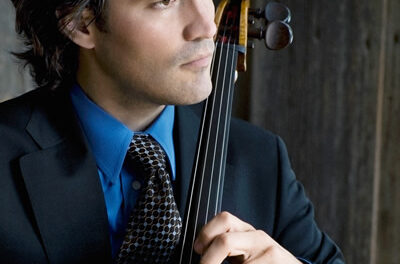Hans Erich Apostel (1901-72), Piano Music.* Thérèse Malengreau, piano (Fazioli F 278, # 2780649). Bis 2405 (SACD), © 2018, TT 71:17, $19.99 (Arkiv Music).
*10 Variationen Über ein eigenes Thema, Op. 1 (1928); Kubiniana, 10 Klavierstücke, Op. 13 (1945); & 60 Schemen nach Zeichnungen von Alfred Kubin (Abenteuer einer Notenfeder), Op. 13a (1948-49).
Two manuscript scores discovered recently in Vienna and Switzerland by the Belgian pianist performing here permits the rediscovery of a composer who studied under Arnold Schönberg, knew Alban Berg, and remained closely associated with both, and the German Expressionist painters of the Die Brücke and Der Blaue Reiter movements (See my article that includes information about these artist groups) whose work was suppressed by the Nazis as Entartete Kunst (Degenerate Art), and the Viennese art journal Der Sturm, which also had a gallery.
It features two world 1ère performances (from the manuscripts) and recordings of three works, the third having had a few performances and been published, directly inspired by works of art. One of the manuscript works, dedicated and sent to him, is based on live chalk drawings (black on 70 cm h. x 50 cm w. [27.6″ x 19.7″] white paper) by Oskar Kokoschka (1886-1980; he had an affair with Alma [Schindler] Mahler, Gustav’s wife/widow, in 1912-14 [depicted in his painting The Bride of the Wind, immediately after she and Walter Gropius (1883-1969), founder of Das Bauhaus, broke up; she had also had an affair with her piano teacher, Alexander von Zemlinsky when younger; I mention these because of their interconnections and the fact that they were all public knowledge among the members of the Viennese art and music circles).
Apostel takes an interesting about-face perspective, focusing on female audience members (one of them the host’s wife, Kamilla 1885-1942), rather than the musicians, during 1920 salon performances given by art historian, accomplished amateur pianist (Beethoven’s sonata Op. 110 was on the program when # X was drawn.) and talented self-accompanying singer (particularly of Slovakian songs), Karl Swoboda (1889-1977) in his home. Imagine Sigmund Freud (1856-1939) and/or Karl Jung (1875-1961), their contemporaries, observing and taking notes as an equivalent activity. You might want to attempt to see the film: Mahler auf der Couch to understand the period’s culture and society; some of these people are characters in its story. I encourage you to explore all the links in this article.
Kokoschka made c. 20 sketches of the listeners, and, in March 1921, on the instigation of his brother, Bohuslav, chose 10, all but 1 (# II: “Valerie G.”) of Kamilla, to publish in a portfolio: Varaitionen über eine Thema, Vienna: Lányi; note the use of the name of the musical form in its title: these are works of art, not music, the theme is listening to music that likely did not include Variations (None are among the works noted on the bottoms of the sketches.). The work was revisited in 1988 in a book (probably associated with an exhibition, now out of print; I saw a copy, via ILL, from the Univ. of AZ) by the museum in the artist’s birthplace house, in Pöchlarn (near Melk) in Austria, under the title: Oskar Kokoschka · Das Konzert: Varaitionen über eine Thema; Hommage à Kamilla Swoboda, ed. by Reinhold Graf Bethusy-Huc: Salzburg: Galerie Welz. It contains a preface by the ed. and 7 short but enlightening essays by others, 2 by the same author, and 2 reprinted from period [1921 & 1924] art journals, 4 unpublished 1920 sketches of other concert listeners, other independent sketches and numerous photographs of Kamilla, Karl, and their son Michael, including 1 from 1920, and one of the original publisher. The variety of moods portrayed in the original set is impressive.
The other two works are both based on an art book: Schemen. 60 Köpfe aus einer verklungenen Zeit (Sketches [pen & ink]. 60 Heads From Past Times) by Alfred Kubin (1877-1959), published in 1943 (Königsberg [Prussia; now Kaliningrad, Russia, between Poland and Lithuania on the Baltic Sea]: Kanter-Verlag), reclusive artist totally forgotten today, and are dedicated to him. The subtitle (See listing above.) of the second (= Adventures of a Note-writing Pen) is a tip-of-the-hat to the painter, who had used Abenteuer einer Zeichenfeder (= [ …] a Drawing Pen) as the title of an earlier album of his works. They are not of people, but of types from various periods of history, and resemble caricatures more than portraits of specific individuals. Apostel’s manuscript places each score on a page with the corresponding drawing. His musical sketches for them are much briefer than those for the Kokoschka portraits: 31:13 for 60 and 15:10 for 10 (= 46:23 for 70, of which some must be for the same sketches/images) vs 23:54 for 10 respectively.
Although the inter-connections and relations are complex, and the two intervening World Wars had impacts on everyone and everything, the music is not; neither is it atonal, dissonant, or dodecaphonic (There are moments of all three styles.) as was much of the music of that era. Malengreau’s detailed note in the accompanying booklet helps to sort out some of the complexities; I have sorted out others here. Apostel’s works for each sketch give only tempo indications, but Malengreau has determined some structural patterns and a progression for the Kokoschka set. Two images (Nos I & X) are reproduced on p. 16 of the booklet, so it is possible to see how well the music (trs 2 & 11; no sketch inspires the tr. 1 “Thema, andantino,” which calls to mind the “Promenade” movements of Modest Mussorgsky’s 1874 Pictures at an Exhibition at which 10 works by Viktor Hartmann [1834-73] were shown) suits them, but it is not possible to ascertain how well the music depicts the images of the other 8, which display a great variety in facial expressions, without the portfolio or the book. I have listened to all 10 with it open on my lap, and they seem to represent the postures and facial expressions well; it is easy to see what inspired the tempo Apsotel chose, but I’m not sure that the tempo would inspire the image in the sketch. His works for Kubin’s sketches are likewise only identified by tempo indications, and those of the second set are performed in groups on 9 tracks of the CD, with their numbers given: 4 of those that correspond to 4 of the 60 are reproduced on p. 17 of the booklet, so an assessment is possible for those, but not easily achieved; I did not attempt it.
Nevertheless, there is a huge variety of expression throughout these short musical works, with little to no repetition. It is easy to perceive the patterns and sounds as evocations or representations of human actions/reactions, or characters. Malengreau writes (p. 8): “Apostel’s cycle has the same summits, derived from the correspondence between the intensity of sound and the drawings: the sum total of each variation – tempos, dynamics, character, degrees of dissonance, polyphonic density – determines the degree of expressive intensity.” [pp. 26-27 for her original French: « Le cycle d’Apostel construit sa progression sur ces mêmes pôles, qui ressortaient déjà de la correspondence entre ‘ intensités sonores ‘ et dessins et c’est l’ensemble des caractéristiques de chaque variation – tempi, nuances, caractères, degrés de dissonance, densité polyphonique – qui crée les degrés d’intensité de l’expression. »] Her playing is superb; the whole is easy and enjoyable to hear and easily sustains multiple re-listenings. Like Mussorgsky’s Pictures […], the music can be enjoyed without seeing the art.












